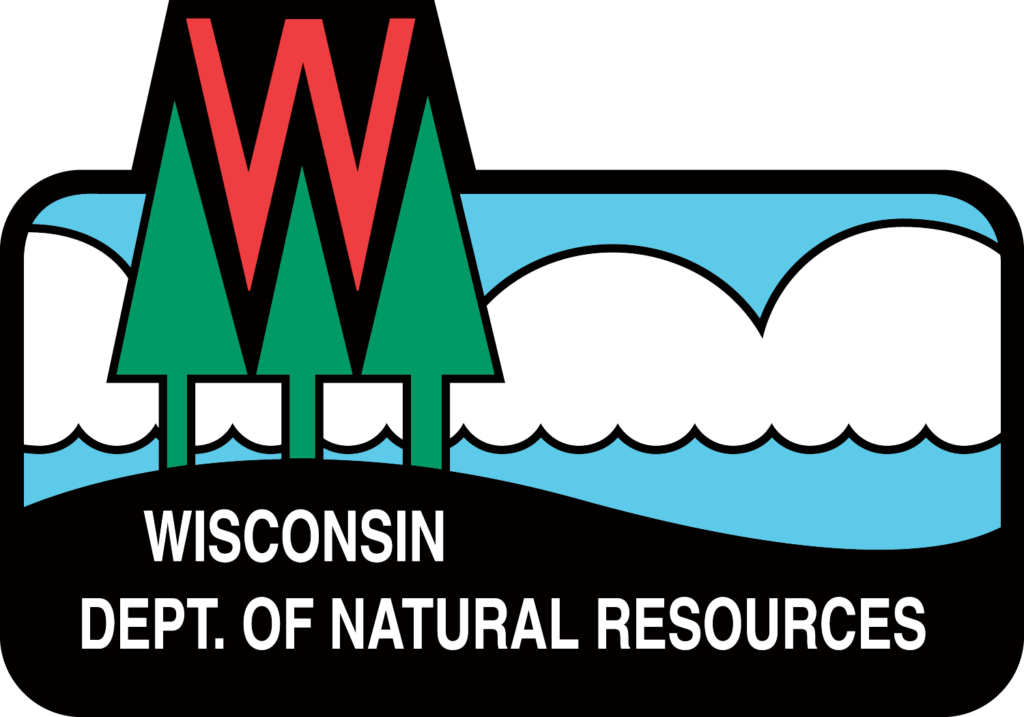
 The annual WAA/DNR Urban Forestry Conference will again be held at the KI Convention Center in Green Bay, Wisconsin. More information will be available soon! Continue reading “Save The Date: Feb. 15-17, 2026 – WAA/DNR Annual Urban Forestry Conference”
The annual WAA/DNR Urban Forestry Conference will again be held at the KI Convention Center in Green Bay, Wisconsin. More information will be available soon! Continue reading “Save The Date: Feb. 15-17, 2026 – WAA/DNR Annual Urban Forestry Conference”
Partners
Networking At Riveredge Nature Center
By Olivia Witthun, DNR Urban Forestry Coordinator; Olivia.Witthun@wisconsin.gov or 414-750-8744
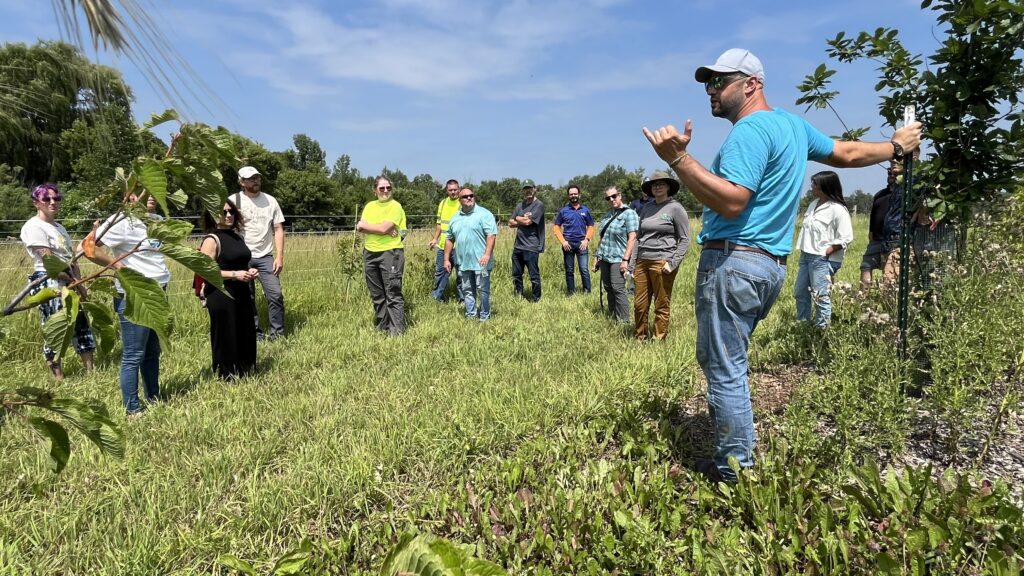 Tree managers met at Riveredge Nature Center (RNC) for a networking meeting/field tour at the end of July. RNC is located in Saukville, ground zero for Emerald Ash Borer (EAB) in Wisconsin, which was discovered in 2008.
Tree managers met at Riveredge Nature Center (RNC) for a networking meeting/field tour at the end of July. RNC is located in Saukville, ground zero for Emerald Ash Borer (EAB) in Wisconsin, which was discovered in 2008.
The indoor portion of the meeting consisted of updates from DNR Urban Forestry and Forest Health staff. There was also time for open sharing amongst attendees and an overview by Matt Smith (RNC) about what we’d be seeing in the field. Continue reading “Networking At Riveredge Nature Center”
DNR Urban Forestry Council Welcomes New Members
By Jenn Janness, Urban Forestry Council Liaison, jennipher.janness@wisconsin.gov or 715-815-7173
The Wisconsin Department of Natural Resources (DNR)’s Division of Forestry recently welcomed six new members to the Wisconsin Urban Forestry Council and said farewell to three members who contributed much to the council. In addition, four council members renewed their commitment for another three-year term. Linda Cadotte was also confirmed as the chair and will serve for two years.
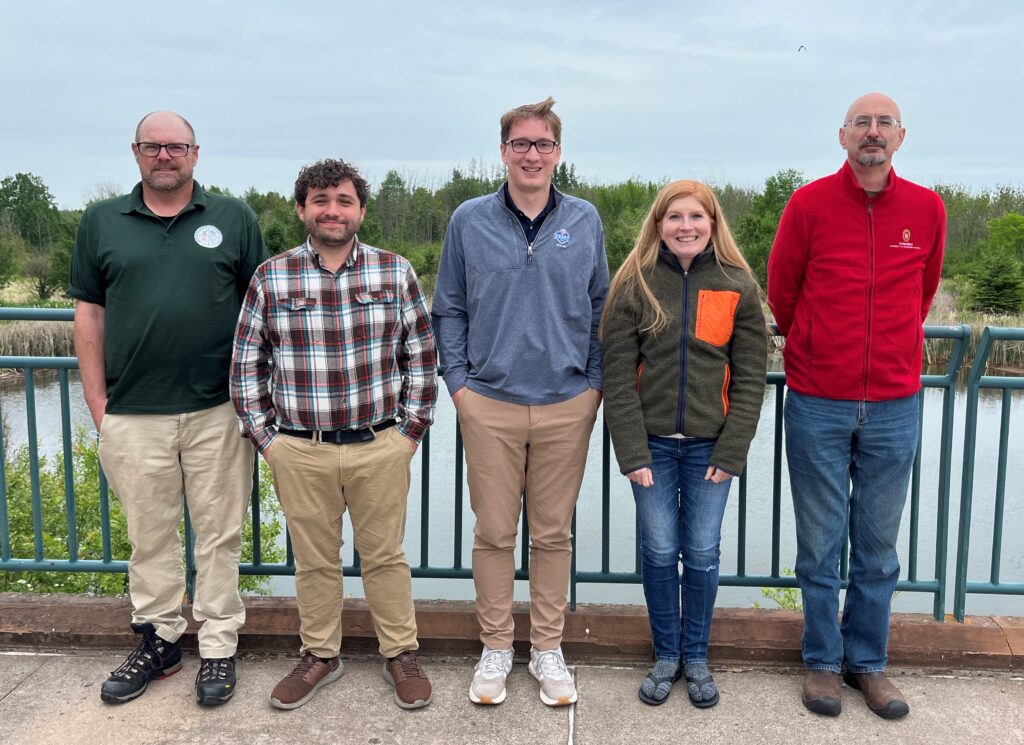
New council members left to right: Greg Blick, Mitch Lannan, Evan Miller, Kristi Sherfinski and Allen Pyle (not pictured, Jeff Kluslow)
Continue reading “DNR Urban Forestry Council Welcomes New Members”
Collaborative Reforestation – Sheboygan Area School District
By Tony Fessler, Co-Coordinator – Restoration Of Our Trees Sheboygan, www.sheboyganrotary.com or 920-946-6770.
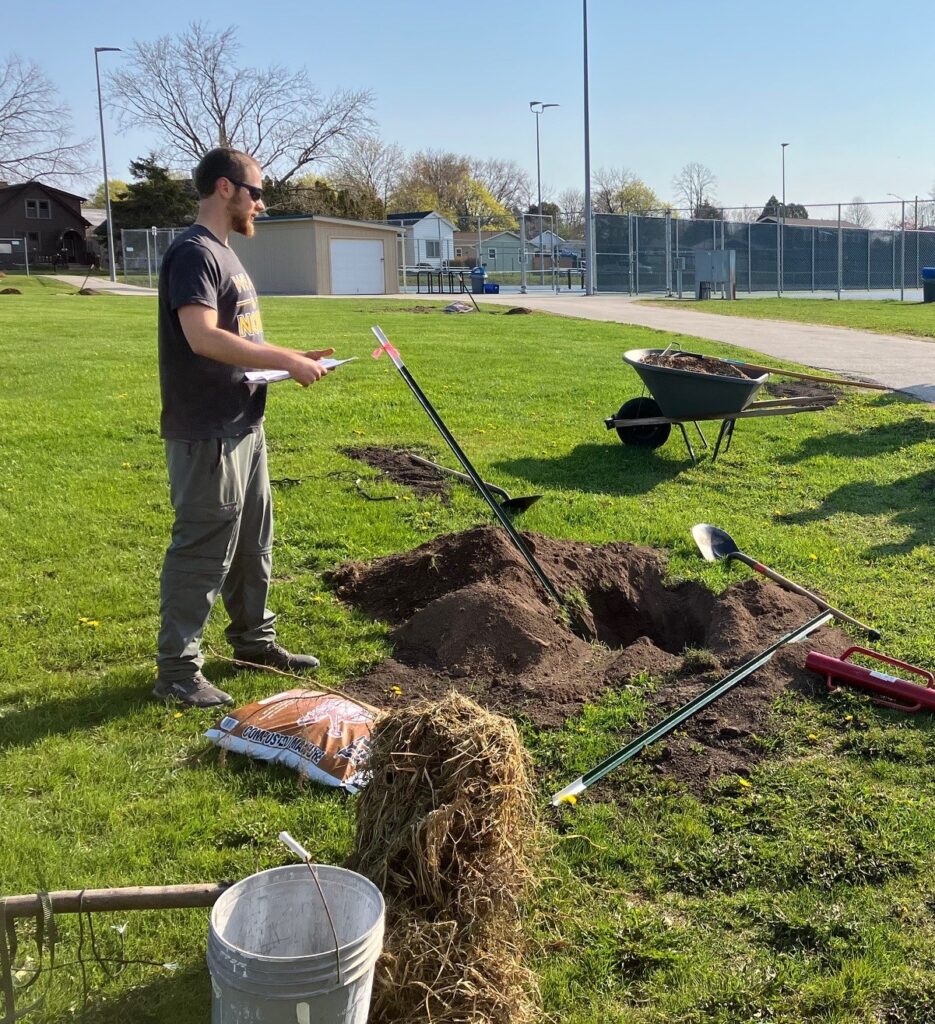
Photo Credit: Tony Fessler
A collaborative urban reforestation project involving the Sheboygan Area School District, the Sheboygan Rotary Club Restoration of our Trees Sheboygan (ROOTS) and the Lakeshore Natural Resource Partnership (LNRP) completed a second major milestone on May 10, 2025. This first-of-its-kind urban reforestation collaboration was initiated in 2024 through a matching $25,000 Wisconsin Department of Natural Resources (DNR) Urban Forestry Grant to ROOTS and LNRP. Continue reading “Collaborative Reforestation – Sheboygan Area School District”
2026 Urban Forestry Grants Announced
By Nicolle R. Spafford, DNR Urban Forestry Grants Manager; Nicolle.Spafford@wisconsin.gov or 715-896-7099
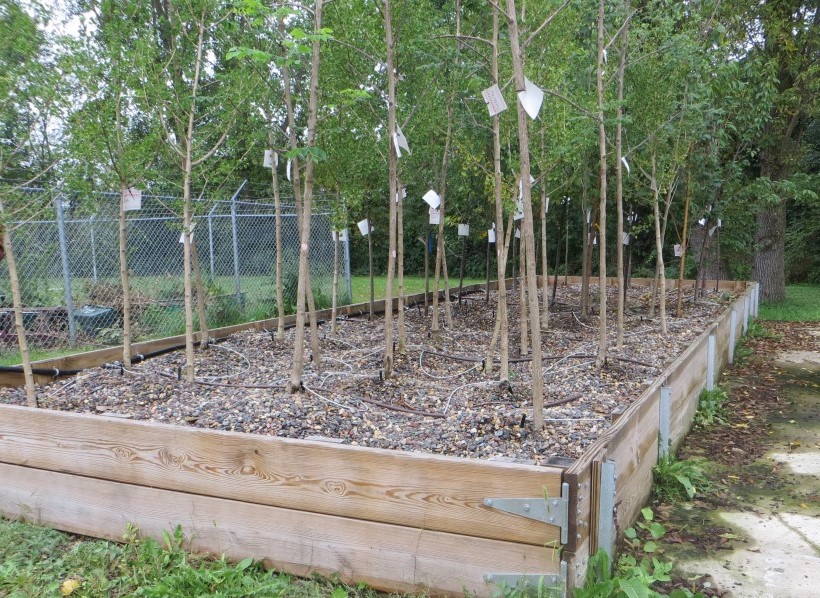 Beginning July 1, 2025, cities, villages, towns, counties, tribes and 501(c)(3) nonprofit organizations in –or conducting their projects in – Wisconsin can apply for a regular or startup 2026 Wisconsin Department of Natural Resources (DNR) Urban Forestry grant. The total 2026 available funding is $559,680, with a possible release of $139,920 of catastrophic storm reserve to fund a second round in March 2026. Continue reading “2026 Urban Forestry Grants Announced”
Beginning July 1, 2025, cities, villages, towns, counties, tribes and 501(c)(3) nonprofit organizations in –or conducting their projects in – Wisconsin can apply for a regular or startup 2026 Wisconsin Department of Natural Resources (DNR) Urban Forestry grant. The total 2026 available funding is $559,680, with a possible release of $139,920 of catastrophic storm reserve to fund a second round in March 2026. Continue reading “2026 Urban Forestry Grants Announced”
DNR Staff Drafted To Plant Trees In Green Bay
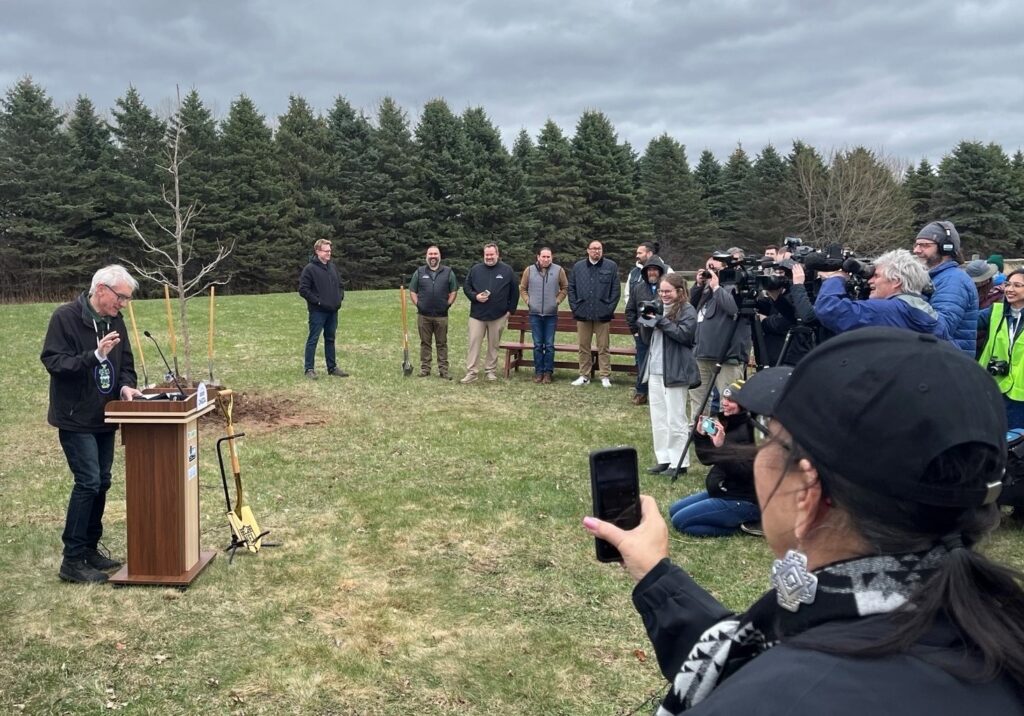
Governor Tony Evers addresses the crowd prior to planting 15 large shade trees.
As part of the 2025 NFL Draft festivities in Green Bay during the week of April 21, the Wisconsin DNR Urban Forestry Team proudly served as a key technical partner for the tree planting event. Held in partnership with the NFL, Oneida Nation, Great Lakes St. Lawrence Governors & Premiers and Verizon as part of the NFL Green initiative, the event brought attention to the importance of community trees and environmental stewardship. Continue reading “DNR Staff Drafted To Plant Trees In Green Bay”
Survey: Likelihood Of Included Bark Failure
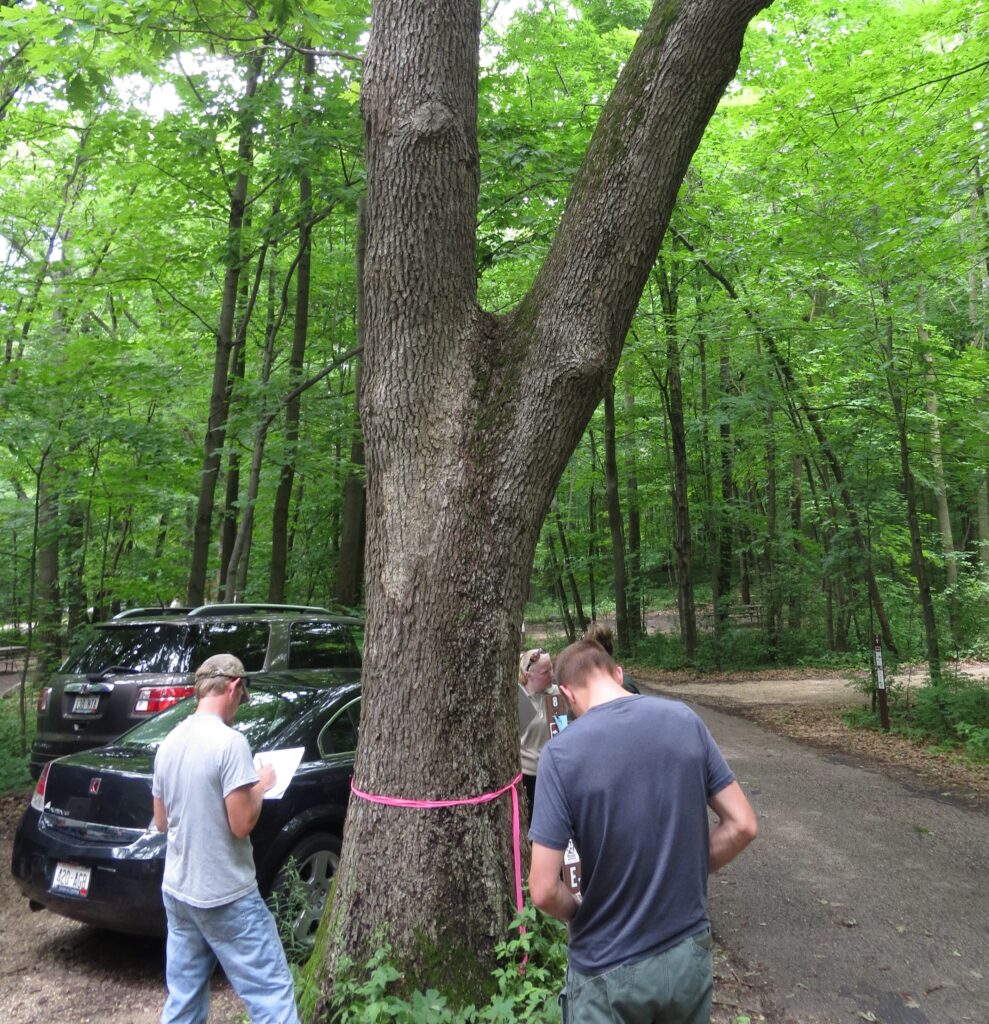 Are you an arborist or urban forester who conducts tree risk assessments?
Are you an arborist or urban forester who conducts tree risk assessments?
Researchers from the Universities of Toronto, Florida and Wisconsin-Stevens Point are researching how arborists perceive the likelihood of failure of included bark. They’ve put together a survey with scenarios and photos and are looking for tree care professionals to rate the likelihood of failure. As an incentive, there will be a drawing for one of ten $100 gift cards to an arborist supply store. Continue reading “Survey: Likelihood Of Included Bark Failure”
Save The Date: Upcoming Conferences
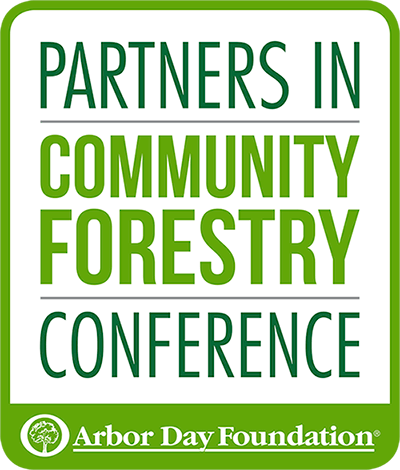 Partners in Community Forestry Conference: Nov. 19-20, 2025
Partners in Community Forestry Conference: Nov. 19-20, 2025
This gathering unites passionate individuals, communities, organizations and leaders to explore innovative solutions, share insights and collaborate on the future of urban forestry. Join leaders across the industry to focus on strengthening the bonds between people and trees, fostering sustainable practices and creating green, thriving urban landscapes.
Keep an eye on the website or sign up for emails for more information.
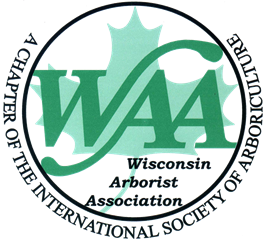 WAA Summer Conference: July 31, 2025
WAA Summer Conference: July 31, 2025
Location: Marian University, Fond du Lac, WI
Watch the WAA website for more information and registration. Continue reading “Save The Date: Upcoming Conferences”
Humble Holiday Keeps On Growing
By Andi Sedlacek, DNR Communications Director
Andrea.Sedlacek@wisconsin.gov or 608-228-3032
*To read more articles like this, check out the Wisconsin Natural Resources magazine online.
A simple idea, to celebrate planting trees, and it’s grown into a national holiday: Arbor Day.
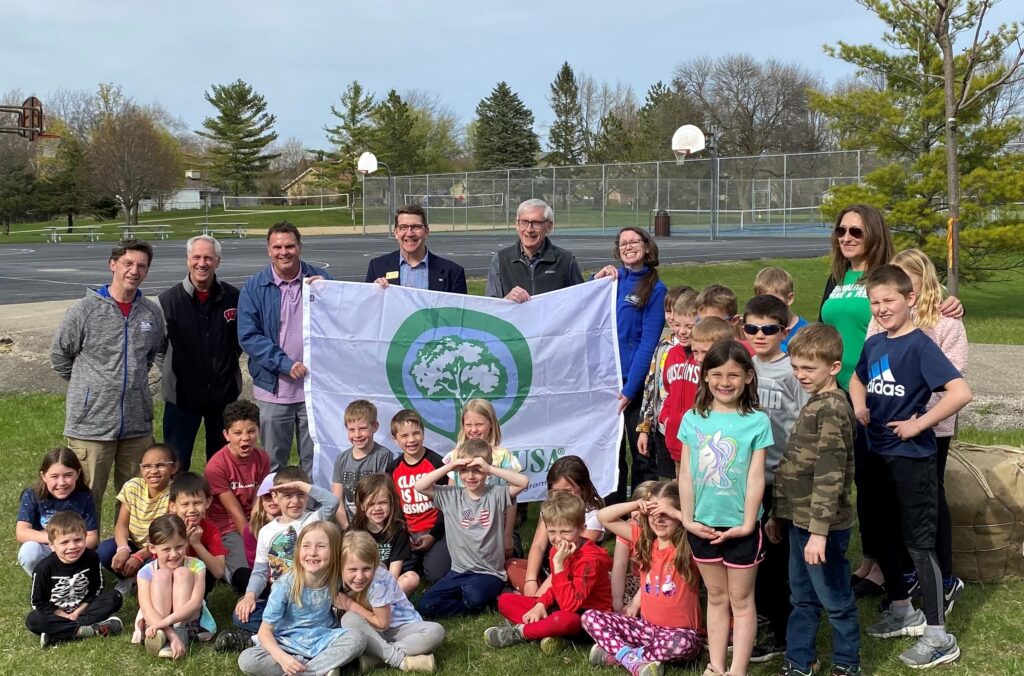 Arbor Day’s roots began in the late 1800s in Nebraska where, according to the Arbor Day Foundation, residents of Nebraska City felt a lack of trees in their community. The secretary of the Nebraska Territory at the time, J. Sterling Morton, proposed a statewide tree-planting holiday, and on April 10, 1872, the first Arbor Day was celebrated. Continue reading “Humble Holiday Keeps On Growing”
Arbor Day’s roots began in the late 1800s in Nebraska where, according to the Arbor Day Foundation, residents of Nebraska City felt a lack of trees in their community. The secretary of the Nebraska Territory at the time, J. Sterling Morton, proposed a statewide tree-planting holiday, and on April 10, 1872, the first Arbor Day was celebrated. Continue reading “Humble Holiday Keeps On Growing”
Wisconsin Tree Leaders Recognized For Exceptional Community Service
By Jenn Janness, DNR Urban Forestry Outreach Specialist
Jennipher.Janness@wisconsin.gov or 715-815-7173
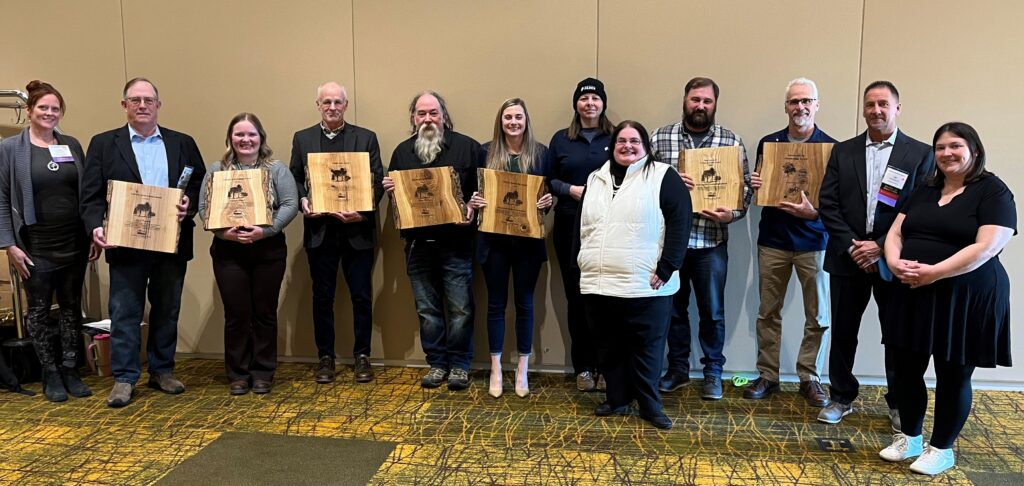
The Wisconsin Urban Forestry Council presents annual awards for furthering urban forestry in the state.
The Wisconsin Urban Forestry Council recently announced its annual awards honoring those dedicated to protecting, preserving and increasing the number of trees that line city streets, fill community parks and beautify neighborhoods throughout the state.
The Wisconsin Urban Forestry Council advises the Wisconsin Department of Natural Resources (DNR) on managing urban and community forest resources.
“Each year, these awards remind me of how special the people are in our industry and the numerous accomplishments they fulfill,” said Lee Fredericks, Wisconsin Urban Forestry Council Award Committee Chair. “Whether they are taking on projects to expand their leadership, involving the next generation of arborists or advancing species diversity in the urban forest canopy, the state as a whole truly benefits.”
This year’s recipients were announced at the 2025 Wisconsin Arborist Association/DNR Urban Forestry Conference in Green Bay. The categories and winners are: Continue reading “Wisconsin Tree Leaders Recognized For Exceptional Community Service”
